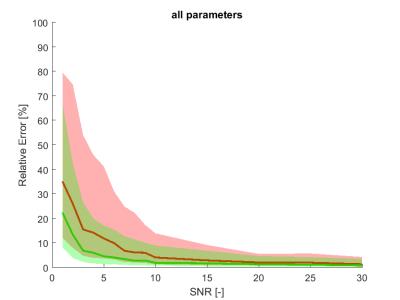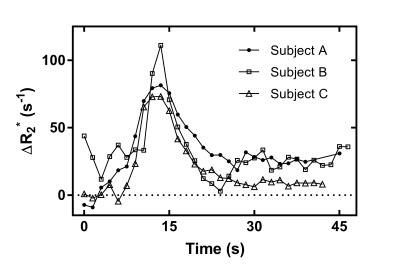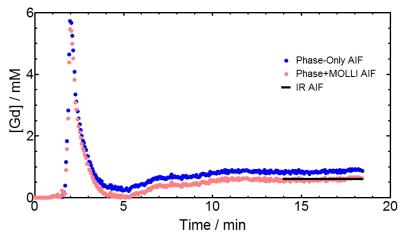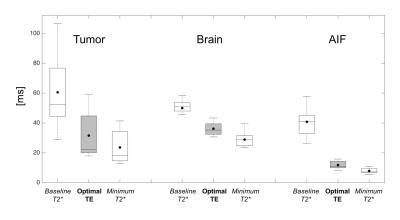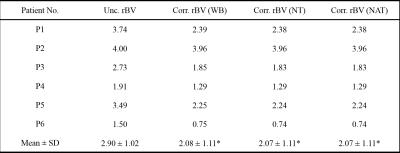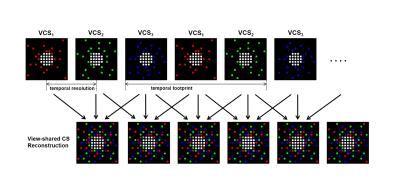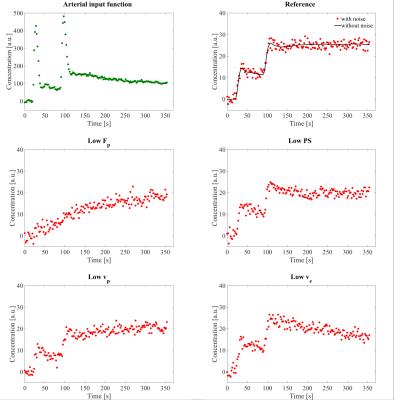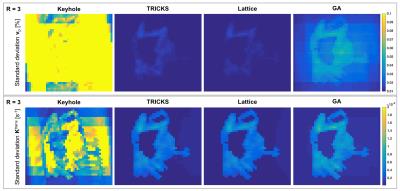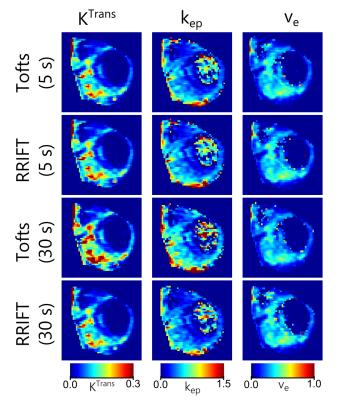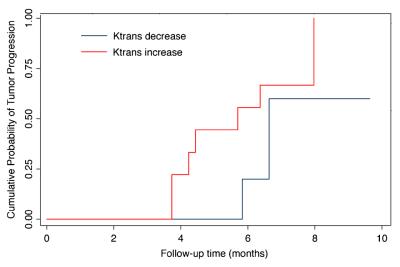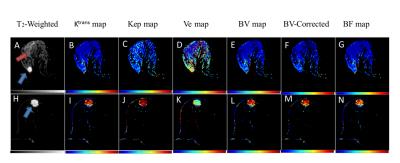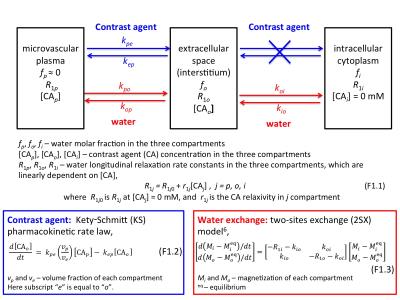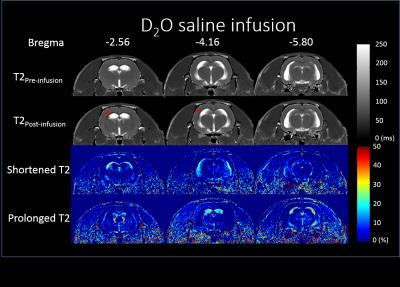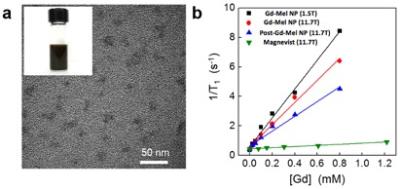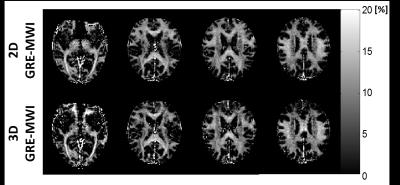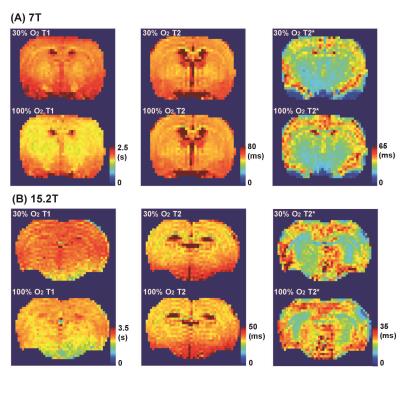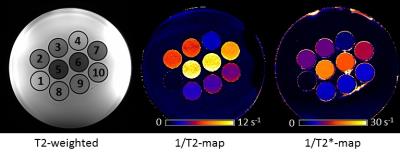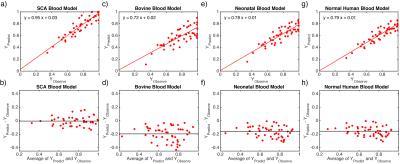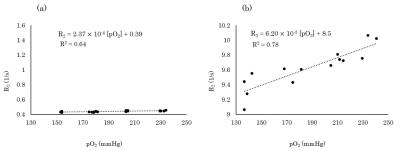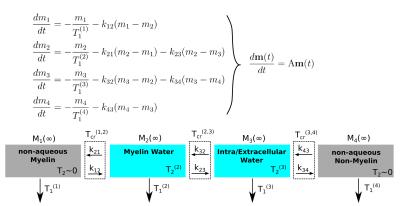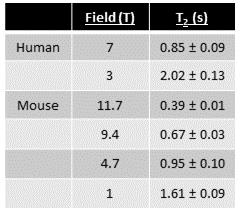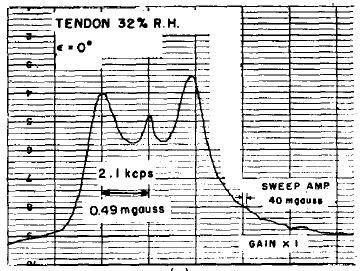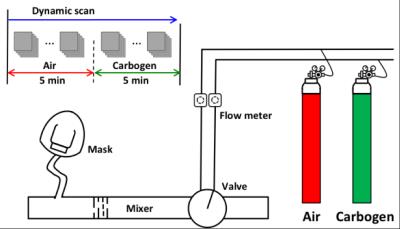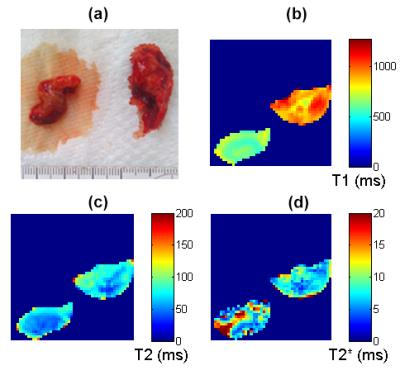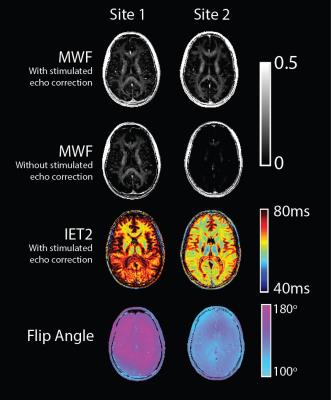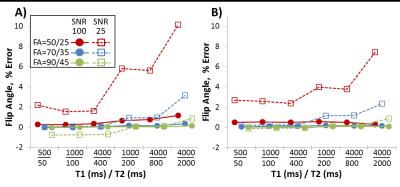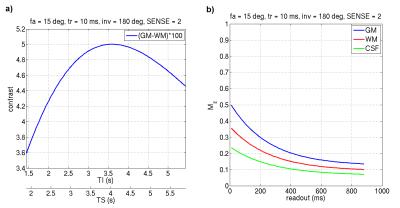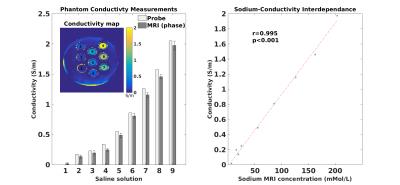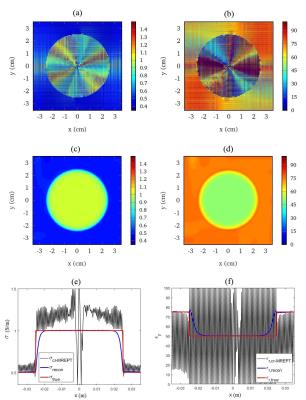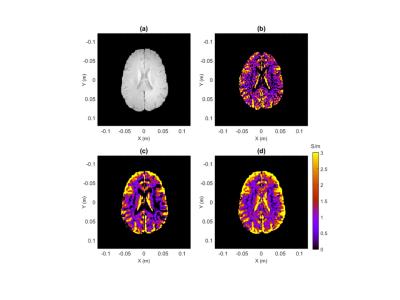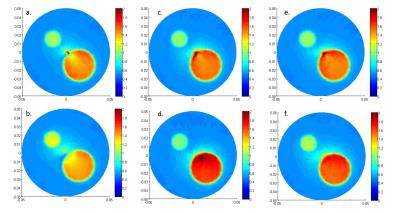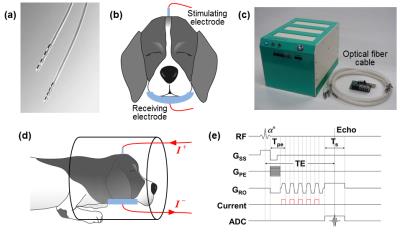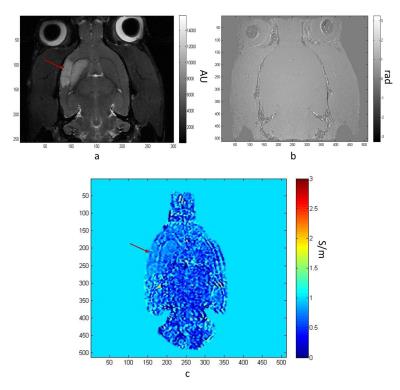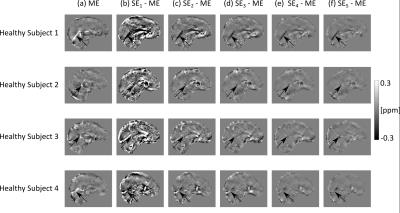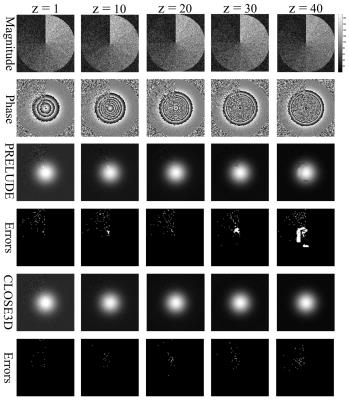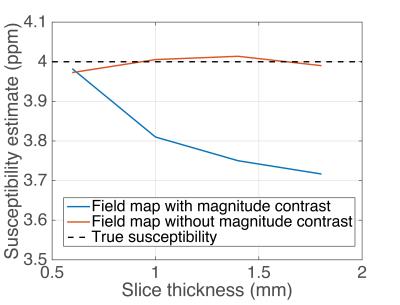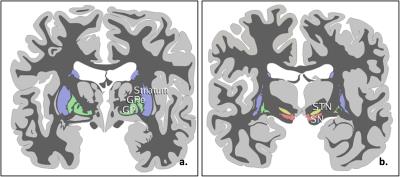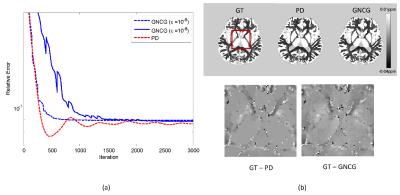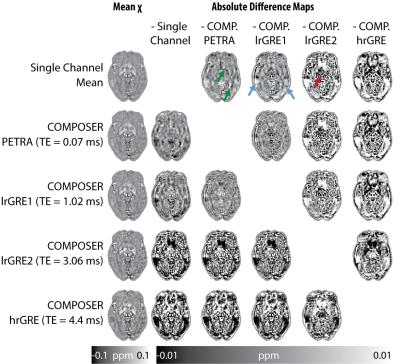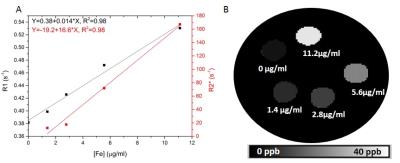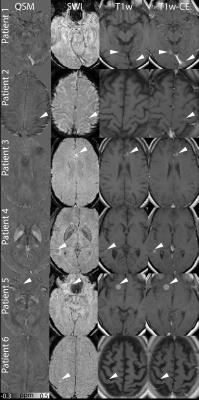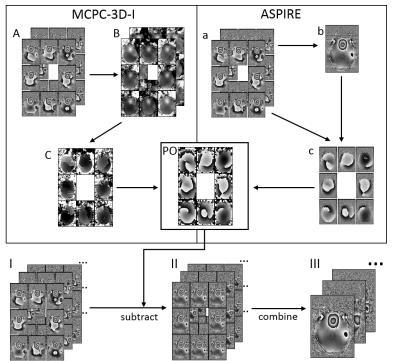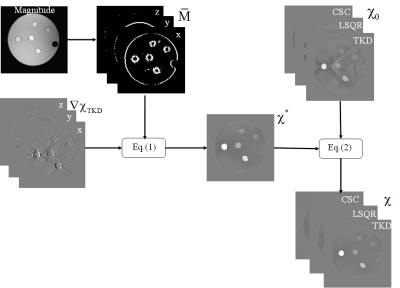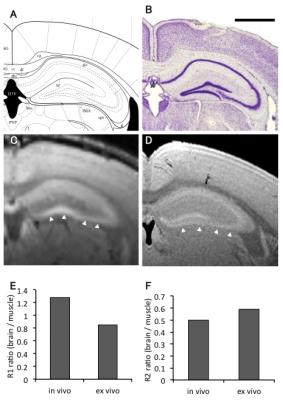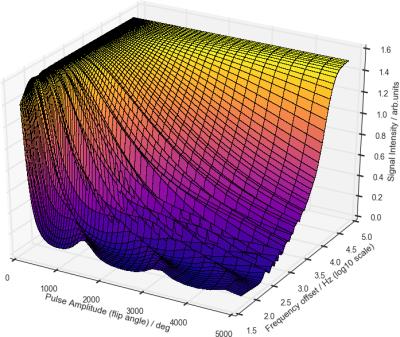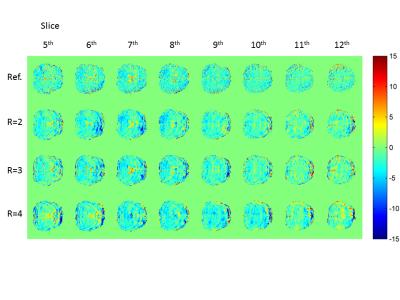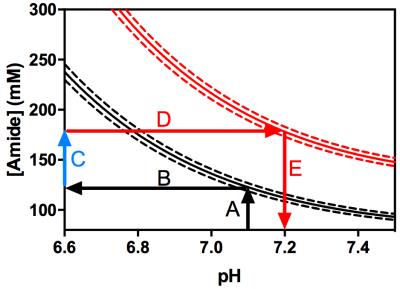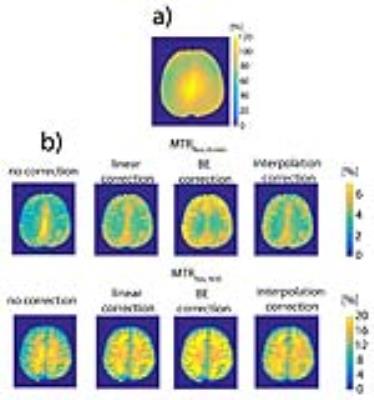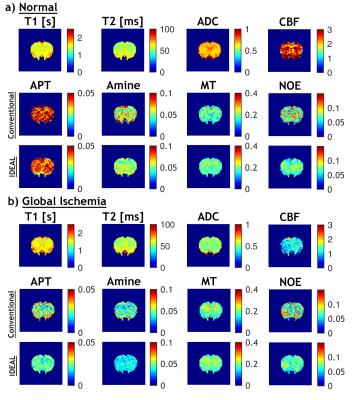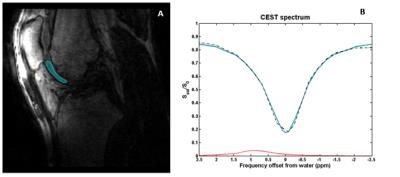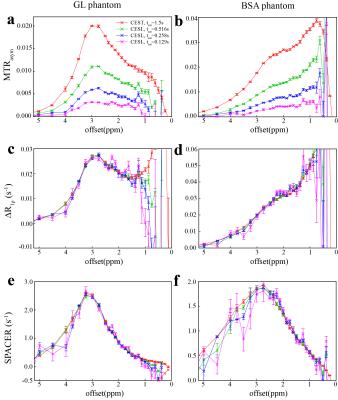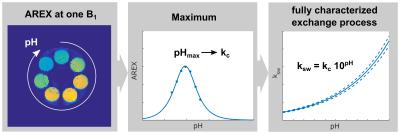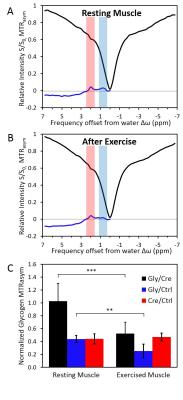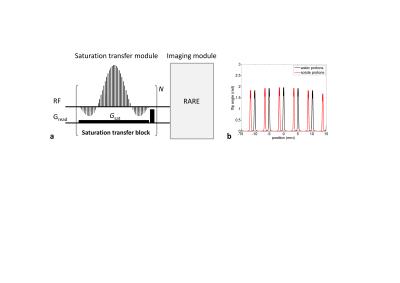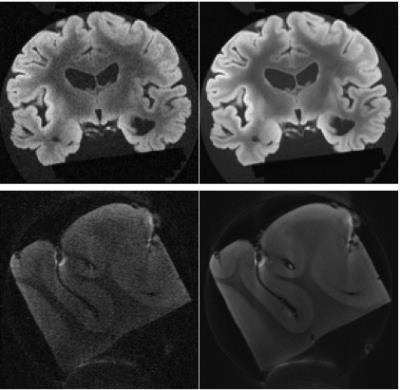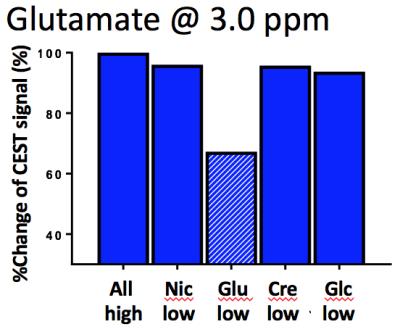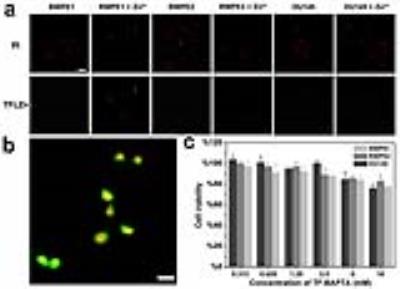Arterial Spin Labeling Applications
Traditional Poster
Contrast Mechanisms
Tuesday, 25 April 2017
| Exhibition Hall |
16:15 - 18:15 |
|
1889. 
 |
Measurement of lung perfusion using optimized pseudo-continuous arterial spin labeling of pulmonary arteries and fast True-FISP imaging at 3 Tesla
Petros Martirosian, Rolf Pohmann, Martin Schwartz, Thomas Küstner, Wolfhard Binder, Christina Schraml, Ferdinand Seith, Nina Schwenzer, Klaus Scheffler, Konstantin Nikolaou, Fritz Schick
Pseudo-continuous-arterial-spin-labeling (pCASL) has been successfully applied in the brain and kidney providing high signal-to-noise-ratio. The aim of this study was to optimize pCASL for measurement of lung perfusion by optimized labeling of pulmonary arteries and fast signal acquisition. Effective labeling of pulmonary arteries was possible by ECG triggering and an appropriate orientation of the labeling plane. Sufficient signal from lung parenchyma was acquired by True-FISP imaging with TE=1ms. The presented method provides high quality perfusion images of the lung without applying intravenous contrast agents and offers diagnostic imaging of lung diseases such as pulmonary embolism and bronchial carcinoma.
|
|
1886.
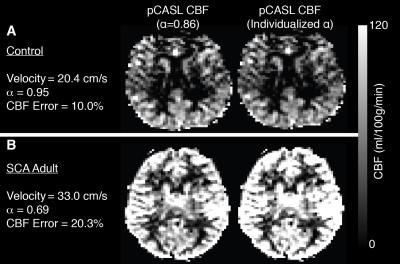 |
Pseudo-continuous arterial spin labeling considerations in patients with sickle cell anemia
Meher Juttukonda, Lori Jordan, Melissa Gindville, Larry Davis, Jennifer Watchmaker, Sumit Pruthi, Manus Donahue
Pseudo-continuous arterial spin labeling (pCASL) MRI involves labeling of flowing arterial blood water; therefore, the flow velocity of the blood water affects the efficiency of pCASL labeling. This effect has been quantified in healthy subjects but has not been examined in adults with sickle cell anemia (SCA). In this study, we illustrate that cervical flow velocities are elevated in adults with SCA, resulting in a reduced pCASL labeling efficiency of 0.72, and errors associated with this phenomenon are more than twice as large as those associated with bolus arrival time variability when long post-labeling delays times are used.
|
|
1883.
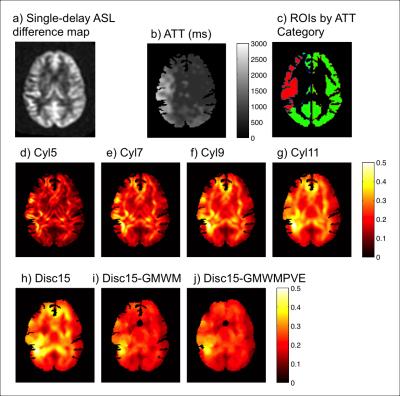 |
Regional Heterogeneity in Moyamoya Disease: Discovering Local Arterial Transit Time Information from Single-Delay Arterial Spin Labeling
Wendy Ni, Greg Zaharchuk
Arterial transit information provides valuable diagnostic information in steno-occlusive pathologies. We propose deriving transit information from the regional spatial heterogeneity (ReHet) of standard single-delay pseudo-continuous arterial spin labeling difference images. With image processing and machine learning, we demonstrate the potential of this technique in identifying regions with slow arterial flow in pre-operative Moyamoya disease patients. We investigate a selection of 7 different ReHet metrics, and identify trends that will inform better design of ReHet metrics and machine learning models.
|
|
1890. 
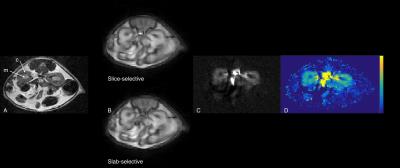 |
Quantification of mouse renal perfusion using arterial spin labeled MRI at 1 Tesla
Quyen Do, Ananth Madhuranthakam, Peter Bendel, Robert Lenkinski
The current work demonstrates the use of a 1 Tesla desktop MR system to study mouse kidney perfusion through arterial spin labeling (ASL) technique. The validity of the implementation was tested by (1) comparing obtained perfusion results with literature values for normal mice and (2) challenging the technique with mice treated with a blood vessel vasoconstrictor drug. Potential applications include easy assessments of disease state, metabolism, and tissue perfusion using a compact MR system.
|
|
1887. 
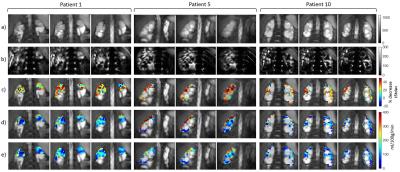 |
Improved reproducibility of longitudinal renal ASL perfusion measurements in children with chronic kidney disease using retrospective motion correction
Fabio Nery, Enrico De Vita, Chris A. Clark, Isky Gordon, David L. Thomas
Arterial spin labelling (ASL) is a unique MR approach for quantifying tissue perfusion non-invasively. However, it is prone to motion-related artefacts which limit its application in the clinical domain, especially outside the brain. In this work, we combine a motion-insensitive ASL acquisition scheme with a specifically tailored retrospective motion correction pipeline. This enabled repeatable renal perfusion measurements to be obtained in the first ASL study in paediatric patients with moderate/severe chronic kidney disease.
|
|
1891. 
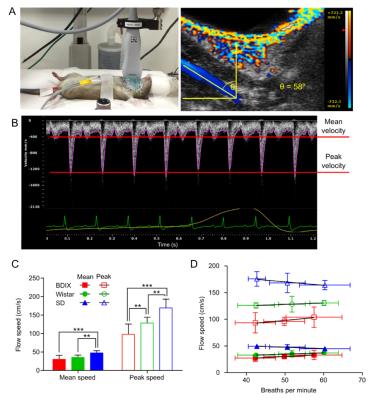 |
Validation of quantitative pre-clinical pseudo-continuous ASL in rat brain
Manon Simard, James Larkin, Alexandre Khrapitchev, James Meakin, Thomas Okell, Peter Jezzard, Michael Chappell, Nicola Sibson
Guidelines for pre-clinical ASL are lacking. We propose MRI parameters for the use of pseudo-continuous ASL in rats. Carotid artery velocity was determined in three rat strains. Bloch simulations for ASL with this information and with parameters for pre-clinical scanners were used to determine the optimal width of the tagging plane required for blood inversion in this smaller species. The use of multiple post-label delays (PLD) in ASL-MRI generated blood arrival maps indicating that a PLD of 550ms was sufficient. Validation of CBF maps generated from ASL was performed using autoradiography, the current gold-standard technique for pre-clinical perfusion measurement.
|
|
1884. 
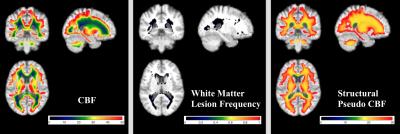 |
White matter cerebral blood flow in a large healthy cohort from the CARDIA study
Sudipto Dolui, Guray Erus, David Jacobs, Jr., R. Nick Bryan, John Detre
By analyzing cerebral blood flow (CBF) maps generated from arterial spin labeling (ASL) data averaged across 436 cognitively healthy middle-aged subjects from the CARDIA study, we characterized the CBF distribution in white matter. CBF is specifically decreased in periventricular regions in a pattern not reflective of partial volume effects as estimated from the structural MRI segmentation. White matter lesion frequency mapping based on Fluid Attenuated Inversion Recovery (FLAIR) images from the same cohort demonstrates that lesions tend to occur in regions where group averaged CBF is lowest.
|
|
1893. 
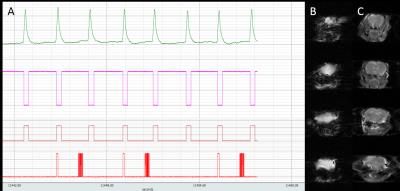 |
Multiphase pseudo-continuous ASL to image cerebral blood flow in mice at 9.4T
Jessica Buck, James Larkin, Alexandr Khrapichev, Manon Simard, Kevin Ray, Michael Chappell, Nicola Sibson
Pseudo-continuous arterial spin labelling is regarded as the gold standard for clinical ASL, and can be improved in humans using multiphase sequences, but has not previously been implemented in mice. A multiphase pseudo-continuous ASL sequence to measure cerebral blood flow in mice was successfully implemented using respiratory triggering and optimisation of imaging readout, tag placement, labelling bolus duration, and post-label delay. Multiphase pseudo-continuous ASL is sensitive to changes in perfusion in an intracerebral glioma model.
|
|
1885.
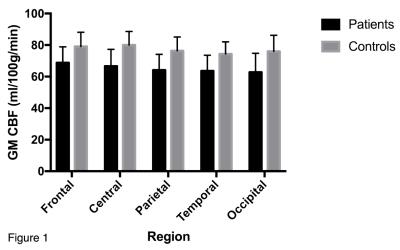 |
Arterial spin labelling measurements of cortical perfusion in multiple sclerosis show widespread reduced cortical metabolism
Ruth Oliver, Heidi Beadnall, Chenyu Wang, Matthew Kiernan, Todd Hardy, Michael Barnett
Multiple sclerosis (MS) is primarily an inflammatory demyelinating disease of the central nervous system. However, there is also growing evidence that cortical dysfunction may also be associated with disability in MS. Few studies have investigated cortical cerebral perfusion in MS, and even fewer have utilised arterial spin labelling (ASL) MRI, which offers noninvasive quantitative assessment of cerebral function using endogenous contrast. ASL is an inherently low resolution imaging modality known to be affected by the partial volume (PV) effect, leading to an underestimation of grey matter (GM) perfusion. Decreases in GM perfusion could reflect neuronal loss or metabolic dysfunction; PV correction techniques allow decoupling of structure and function. It is hypothesized that reduced regional GM perfusion after PV correction reflects a genuine decreased tissue metabolism, rather than atrophy.
|
|
1892. 
 |
Combined 3D perfusion and diffusion MRI to phenotype the mouse brain: evaluation and application to a model of schizophrenia
Ivy Uszynski, Lydiane Hirschler, Jan Warnking, Cyril Poupon, Jean-Christophe Deloulme, Emmanuel Barbier
Perfusion and diffusion imaging both represent powerful tools in order to phenotype mouse models of brain diseases. Indeed, imaging cerebral blood flow (CBF) may be seen as a surrogate marker of brain metabolism while diffusion imaging provides the structural aspects of brain wiring. To evaluate the potential of combined CBF/Diffusion phenotyping, we evaluated the effect of knocking-out (KO) the microtubule-associated protein 6 (MAP6), which plays a critical role during the development of cerebral axonal tracts. Experiments were performed on homogeneous C57Bl6/129Sv mice using 3D pseudo-continuous Arterial Spin Labeling (pCASL) and 3D diffusion tensor imaging (DTI) at 9.4T.
|
|
1894.
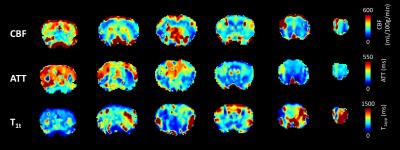 |
3-Dimensional cerebral blood flow and transit time mouse brain mapping using Dynamic Arterial Spin Labeling (DASL)
Lydiane Hirschler, Ivy Uszynski, Jan Warnking, Emmanuel Barbier
Measuring the arterial transit time (ATT) helps for the optimization and quantification of arterial spin labeling experiments. Moreover, ATT may provide information on potential underlying vascular pathologies. In preclinical perfusion studies, multiple 2D-slices are commonly acquired to measure perfusion. However, this readout limits the number of slices for which ATT can be measured accurately in rodents. In this study, we implemented and optimized a dynamic ASL labeling scheme with a 3D echo planar imaging (EPI) readout to simultaneously map cerebral blood flow, arterial transit time and tissue T1 in the mouse brain at 9.4T.
|
|
1895. 
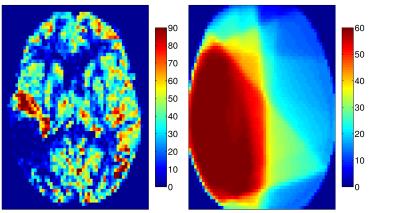 |
Perfusion decrease during radiochemotherapy is not fully explained by volumetric gray matter changes
Jan Petr, Henri Mutsaerts, Frank Hofheinz, Iris Asllani, Matthias van Osch, Ivan Platzek, Annekatrin Seidlitz, Mechthild Krause, Jörg van den Hoff
Radiochemotherapy in brain-tumor patients was shown to cause gray matter (GM) volume and cerebral blood flow (CBF) changes. The interaction of these two effects, however, remains unclear. Here, we investigated GM volume and ASL CBF changes and their interaction in the healthy hemisphere of 38 glioblastoma patients undergoing radiochemotherapy with Temozolomide. We found a statistically significant CBF decrease with dependence on the RT-dose. PV-corrected results indicated that, while to a certain extent the apparent CBF decrease measured by ASL is caused by GM atrophy, there still remain significant CBF changes that cannot be explained by structural changes alone.
|
|
1896.
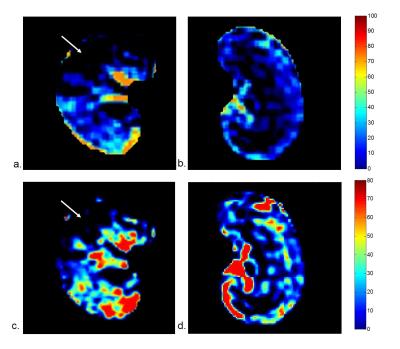 |
Feasibility and value of VTE-ASL in quantitative evaluation of unilateral renal embolism in rabbits
Hanjing Kong, Fei Gao, Chengyan Wang, Yan Jia, Hui Xu, Xiaodong Zhang, Li Yang, Jue Zhang, Xiaoying Wang, Jing Fang
Arterial spin labeling with variable echo time (VTE-ASL) is a perfusion imaging technique capable of noninvasive estimating of GFR. But the application of VTE-ASL in renal disease is still lagging behind. The goal of this study was to investigate the feasibility of GFR and RBF using VTE-ASL in evaluation of unilateral renal embolism in rabbits. Compared with normal kidney, embolism area has large decrease in GFR and RBF, and was confirmed by histological findings.
|
|
1877. 
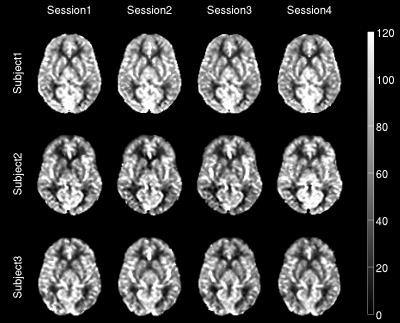 |
Reliability of Single- and Multi-TI ASL measurements with a clinical product sequence
Antonio Ricciardi, Marco Castellaro, Alberto Miglioranza, Giancarlo Germani, Paolo Vitali, Giuseppe Micieli, Egidio D'Angelo, Fulvia Palesi, Gloria Castellazzi, Claudia Gandini Wheeler-Kingshott, Enrico De Vita, Alessandra Bertoldo
Single-TI Arterial Spin Labeling (ASL) is sensitive to delayed arterial arrival time (AAT) of blood in the tissues. Multi-TI was introduced to overcome this limitation. Moreover, it allows estimating AAT that, therefore, can shed some light in the characterization of the brain haemodynamic processes. In this study, we compare the reliability of the multi-TI approach to the single-TI in a test-retest protocol. The sequence tested was the Siemens product sequence FAIR PASL with 3D-GRASE readout. Results show an overall good level of reliability both in single- and multi-TI, but also a possible sensitivity to the macro-vascular component in multi-TI data.
|
|
1880. 
 |
Cerebral Blood Flow and Bolus Arriving Time Changes in Patients with Diabetes Detected by Multi-TI ASL
Yelong Shen, Bin Zhao, Lirong Yan, Kay Jann, Guangbin Wang, Junli Wang, Bao Wang, Josef Pfeuffer, Tianyi Qian, Danny JJ Wang
This study aimed to simultaneously measure cerebral blood flow (CBF) and bolus arriving time (BAT) in a cohort of subjects with type II diabetes, and compared the results with those of matched control subjects using a multi-TI 3D GRASE pulsed-ASL (PASL) sequence. The voxel-based analysis showed that the CBF and BAT values in patients with diabetes presented significant differences compared to healthy subjects, especially in some particular areas of the brain. These differences may be related to functional changes in patients with diabetes, which may have occurred before the onset of the symptoms.
|
|
1898.
 |
Can We Trust TRUST Venous Oximetry in Sickle Cell Disease?
Adam Bush, Thomas Coates, Herbert Meiselman, John Wood
In this work we derive a de novo T2b oximetry calibration curve for hemaglobin S containing red blood cells. We then compare predictions made by this calibration and existing T2b calibrations in 84 subjects in vivo using TRUST MRI. We found that predictions for venous oxygenation saturation and cerebral metabolic rate are widely different depending on the T2b calibration used for oximetry conversion.
|
|
1881.
 |
Estimation of Cerebral Blood Flow and Arterial Transit Time Using Partial Volume Corrected Multi-TI Arterial Spin Labeling Imaging
Youngkyoo Jung, Megan Johnston, Christopher Whitlow
A novel PVC algorithm using Multi-TI ASL, acquiring ASL images at multiple PLDs, has been proposed to estimate CBF and ATT in GM and WM separately. A 3D kernel was used to reduce noise sensitivity and improve the estimation power. The proposed method successfully estimated four perfusion parameters (GM CBF, GM ATT, WM CBF, and WM ATT) simultaneously, and may allow region- or voxel-based perfusion analyses in WM, as well as GM.
|
|
1882. 
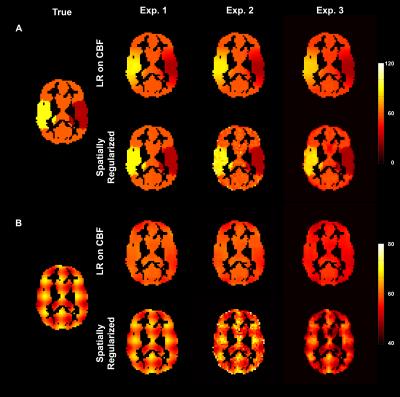 |
Investigating the Sensitivity to Partial Volume Estimates of Partial Volume Correction for Single Postlabeling Delay Pseudo-continuous ASL
Moss Zhao, Egill Rostrup, Otto Henriksen, Yingyi Xiao, Michael Chappell
This work investigates the sensitivity of partial volume correction methods to partial volume estimates using single-PLD PCASL. Random and biased errors were applied to partial volume estimates to simulate the variabilities in tissue segmentation. The results have indicated that current partial volume correction methods trade off accuracy in spatial variations in CBF against sensitivity to noise and errors in the partial volume estimates.
|
|
1888.
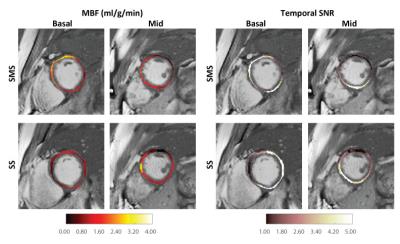 |
Simultaneous Multi-Slice Cardiac ASL
Terrence Jao, Krishna Nayak
Cardiac arterial spin labeling (ASL) is a promising technique for the quantification of myocardial blood flow (MBF) and has been shown to detect clinically relevant changes in myocardial perfusion under vasodilator stress. However, current cardiac ASL techniques have limited spatial coverage because they cannot be repeated for multiple slices due to limited duration of pharmacologically induced peak stress (~3 min). In this work, we demonstrate the feasibility of using blipped CAIPI bSSFP for cardiac FAIR ASL.
|
|
1878.
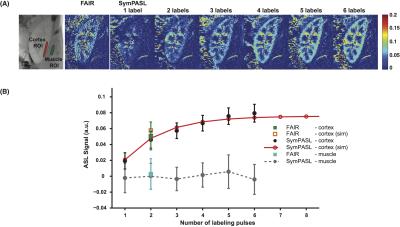 |
Physiologically synchronized multi-module pulsed arterial spin labeled (SymPASL) MRI
Hung Do, Krishna Nayak
Physiologically synchronized multi-module pulsed arterial spin labeling (SymPASL) involves pulsed labeling that is applied several times prior to pulsations in the arterial blood supply. Simulations and in vivo measurements in human kidneys demonstrate that SymPASL provides superior SNR and SNR efficiency compared to conventional flow-sensitive alternating inversion recovery (FAIR) ASL with a single labeling pulse. Simulations suggest that SymPASL provides comparable SNR and SNR efficiency to pseudo-continuous ASL (PCASL), with lower specific absorption rate (SAR).
|
|
1879.
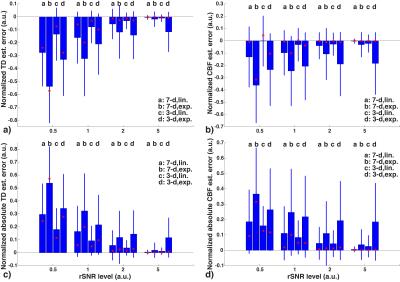 |
Hadamard-encoded Multi-delay PCASL: Should the Bolus Durations be T1-adjusted?
Jia Guo, Marc Lebel, Samantha Holdsworth, Greg Zaharchuk
It has been hypothesized that in multi-delay arterial spin labeling (ASL), employing T1-adjusted labeling durations (LDs) should provide a more balanced signal-to-noise (SNR) across ASL signals, therefore improving the accuracy of the transit delay (TD) and perfusion estimation. However, this claim has not been thoroughly tested. In this study, we evaluated the effects on the TD and perfusion estimation using LDs both with and without T1-adjusted weighting, using the Hadamard-encoded multi-delay ASL sequence. Using Monte Carlo simulations and in vivo experiments, T1-adjusted weighting was more prone to noise and was likely to underestimate the TD and perfusion measurements compared to that without.
|
|
1897. 
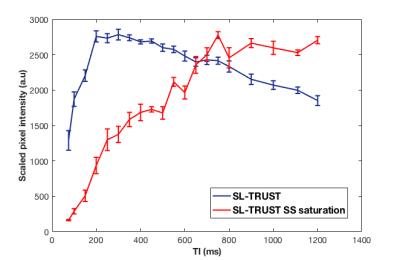 |
Spatially localised measurements of oxygen extraction fraction using modified T2-relaxation-under-spin-tagging (SL-TRUST)
Caitlin O'Brien, Thomas Okell, Peter Jezzard
An existing MR sequence, TRUST (T2-relaxation-under-spin-tagging), is adapted in order to obtain spatially localised T2 measurements for venous blood. T2-encoding, and hence determination of venous oxygenation, is achieved via localised encoding of the longitudinal magnetisation, that is then decoded in the sagittal sinus. Saturation pulses enable spatial localisation by removing signal from unwanted brain regions. Thus, hemispheric and global T2 measurements are acquired and compared. The delay between labelling and arrival of tagged venous blood in the sagittal sinus is evaluated and shown to increase in the presence of saturation pulses.
|
|
























